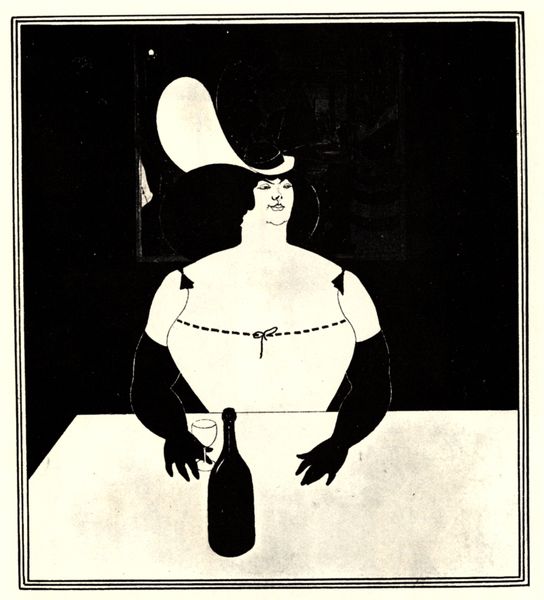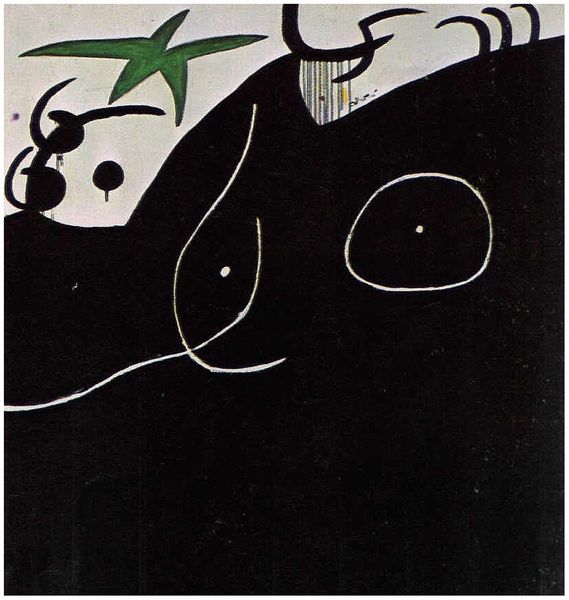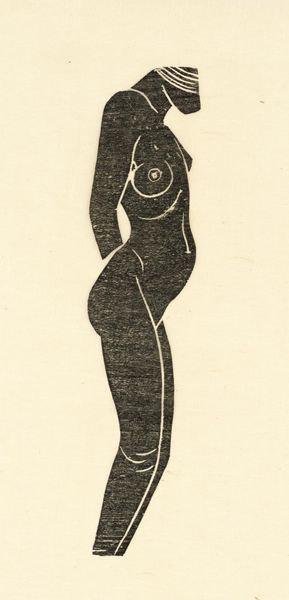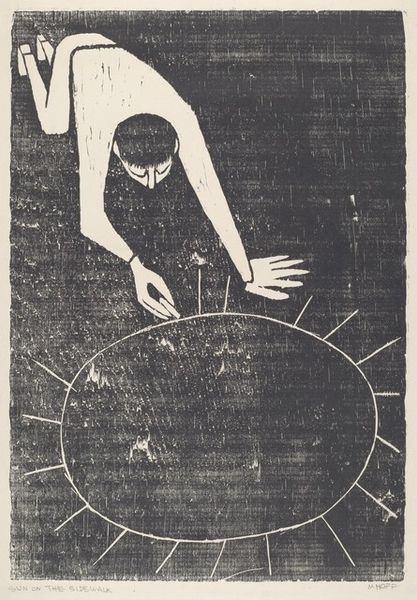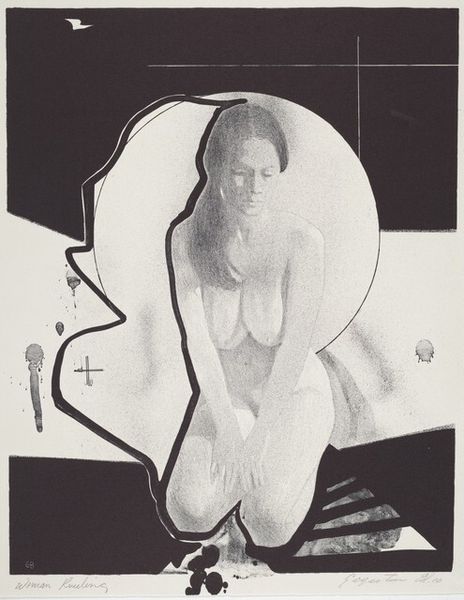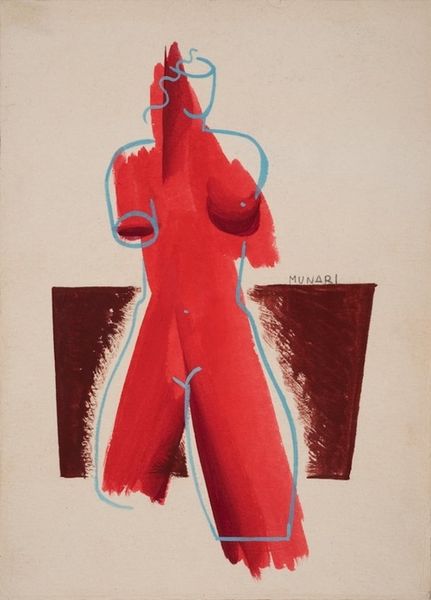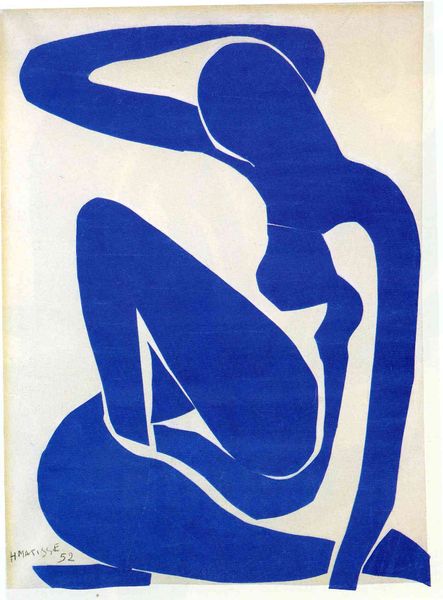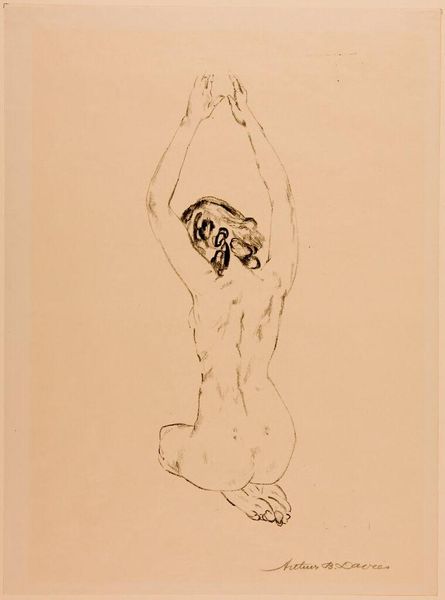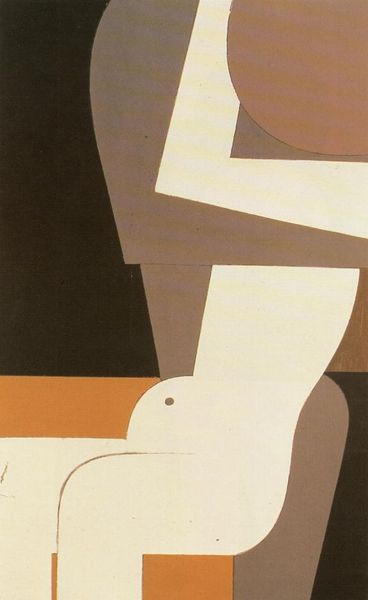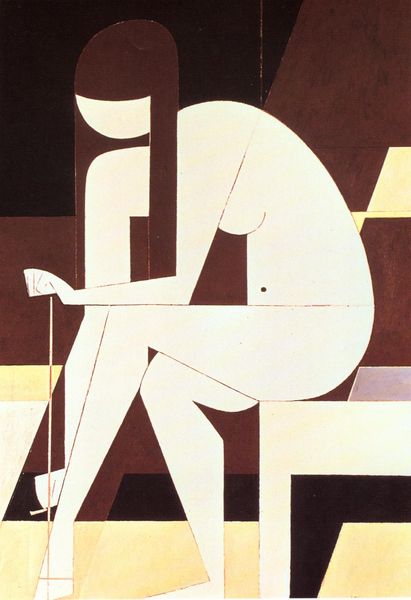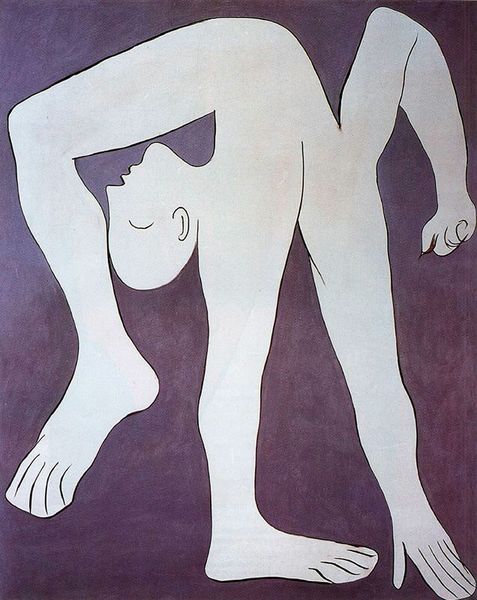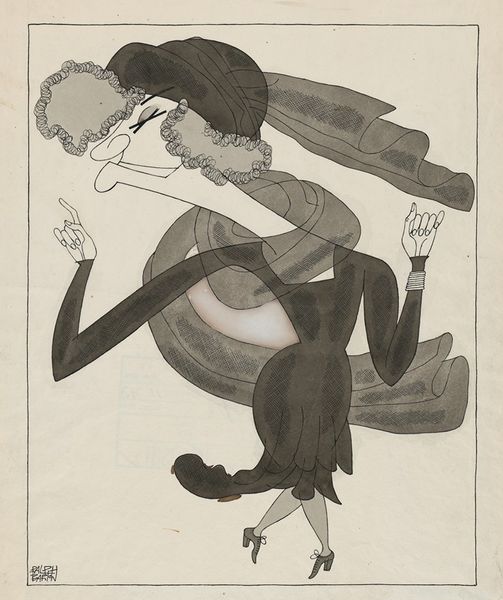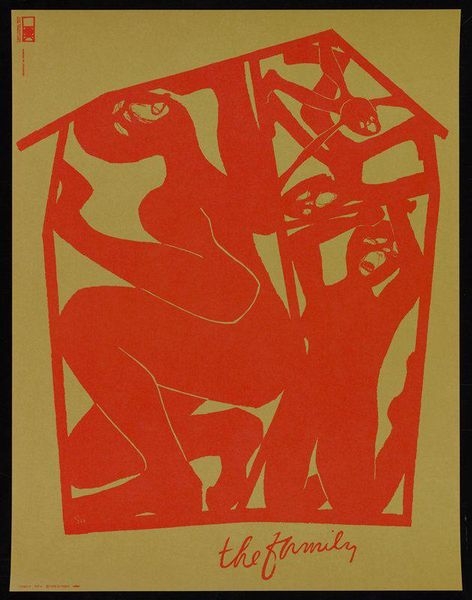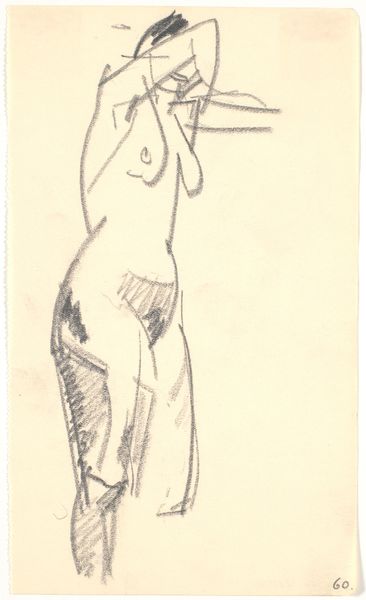
drawing, collage
#
drawing
#
cubism
#
negative space
#
collage
#
figuration
#
geometric
#
abstraction
#
symbolism
#
watercolour illustration
#
modernism
Copyright: Francis Picabia,Fair Use
Curator: This is Francis Picabia's work, entitled "The Fig Leaf." It employs drawing and collage to engage with themes of figuration and abstraction. What strikes you upon seeing it? Editor: Its stark silhouette against the white ground gives it an immediately confrontational, almost oppressive, feel. The figure's form seems deliberately grotesque, and it's clearly playing with ideas of masking and hiding. Curator: Absolutely. The fig leaf itself, traditionally a symbol of modesty and concealed shame, here feels almost ironically displayed, subverted through Picabia's symbolism. One almost wonders if he is revealing something that should remain unseen. Editor: Or perhaps pointing to the absurdity of the convention of hiding itself. Thinking about gender and power dynamics, is this about masculine insecurity, perhaps? Placing his foot on the dark sphere…it all seems deliberate. The lack of definition in the facial features amplifies the objectification and dehumanization. Curator: Indeed. Picabia was certainly attuned to cultural anxieties. Notice how geometric shapes form a body with few realistic anatomical features. This disrupts any naturalism in the portrayal of a man. We must recall Picabia's engagement with Cubism, an art movement characterized by geometric shapes, lines and dimensions and its symbolic value. Editor: It makes me wonder about the politics of representation here. Whose body is being parodied and to what end? Is Picabia critiquing some aspects of masculinity? Curator: It's hard to say definitively, as he was a figure of paradox, known for changing styles rapidly and embracing contradiction. What cannot be overlooked is the careful selection of images and symbols. The use of visual shorthands engages the collective cultural memory. The placement of each object speaks to its emotional and psychological weight, like a palimpsest etched through time. Editor: These points bring so many new elements of consideration. There's a lot more than initially meets the eye! Curator: Yes. It is through this unveiling of layers that the artwork opens channels to speak about its meaning. Editor: Thank you. That makes Picabia’s play with such established visual languages more incisive in my mind.
Comments
No comments
Be the first to comment and join the conversation on the ultimate creative platform.
